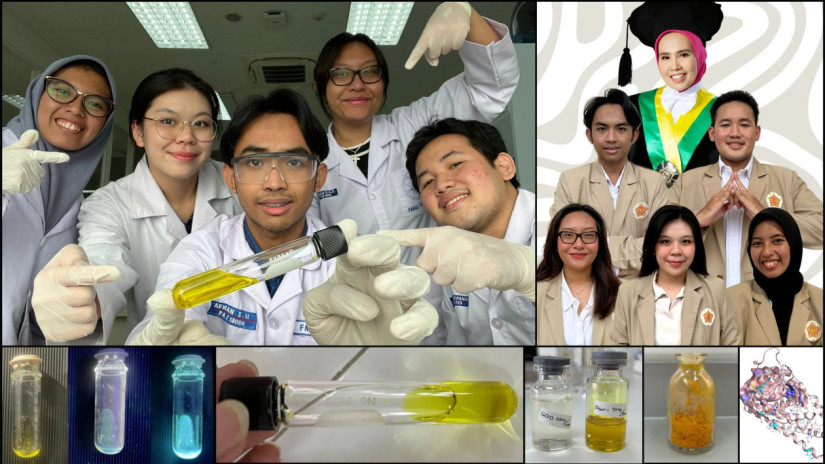
The Global Cancer Statistics (GLOBOCAN) report states that the number of cancer patients worldwide is projected to increase by 47% by 2040, with 28.4 million cases of various cancers expected to emerge.
Among these, breast cancer is predicted to be one of the most prevalent. In Indonesia, breast cancer accounts for 19.2% of all cancer cases, making it the second leading cause of cancer-related deaths after lung cancer.
Currently, many bioactive-based cancer treatments and inhibitors have been developed. A research team from Universitas Gadjah Mada (UGM) has developed an alternative breast cancer therapy called CurcumaPharphene.
The compound found in turmeric has been shown to possess anti-cancer properties that can aid in the recovery of breast cancer patients.
“Our research found that turmeric contains higher and more effective anti-cancer properties compared to regular turmeric extracts,” said Afnan Syifa’ Muhammad, the head of the CurcumaPharphene Research Team, on Saturday (Jul. 20).
Besides Muhammad, the CurcumaPharphene Research Team includes four other members: Muhammad Nino Irwana (Faculty of Pharmacy), Gabriella Kanya Sapto Putri (Faculty of Pharmacy), Jennifer (Faculty of Pharmacy), and Durroh Sofiana (Faculty of Mathematics and Natural Sciences) under the guidance of Professor Ritmaleni, a lecturer at the UGM Faculty of Pharmacy.
Through the Student Creativity Program in Exact Science Research (PKM-RE), the team tested the natural compounds in turmeric, which are known to be effective anti-cancer agents. One derivative, Pentagamavunon-1 (PGV-1), is a synthetic compound with anti-inflammatory and anti-cancer properties.
According to Muhammad, while this compound is already quite common, its presence in turmeric is not yet maximized for effectively killing cancer cells in the body. Muhammad and his team discovered the potential use of graphene to enhance the performance of Pentagamavunon-1.
Graphene and its derivatives, such as graphene oxide and graphene quantum dots, are known to have a huge surface area, providing excellent drug-loading capacity.
He said, “This advantage allows for a higher concentration of active nanoparticle compounds than other materials.”
Gabriella Kanya Sapto Putri, another team member, explained that in their research, turmeric extract (curcumin) complexed with graphene oxide and graphene quantum dots as a drug carrier against MCF-7 breast cancer cells showed significantly better potential than regular curcumin, achieving up to eight times (800%) improvement.
“This combination has the potential to help breast cancer patients out there,” Putri said.
Jennifer, another team member, explained that graphene is a two-dimensional nanobased material up to 200 times stronger than steel. Graphene also has 70% better electrical conductivity than copper.
Its flexibility is extremely high, with an elongation capacity of over 40%. Graphene is also very thin, lightweight, and almost transparent, making it easy to apply in various fields, including pharmaceuticals.
To date, graphene’s potential in the pharmaceutical field can be utilized for nanocosmetics, nano biosensors, and nano-drug delivery systems. Oral chemotherapy, one method of cancer treatment, requires a robust drug delivery system to increase effectiveness and reduce side effects.
“Current drug delivery systems are still considered ineffective for oral chemotherapy. Therefore, graphene is touted as a new drug delivery system to revolutionize oral chemotherapy,” said another team member, Nino Irwana.
Irwana is optimistic that their research findings can revolutionize the pharmaceutical industry in Indonesia. This innovation also supports the Sustainable Development Goal (SDG) 3, which aims for good health and well-being.
Author: Tasya
Editor: Gusti Grehenson

